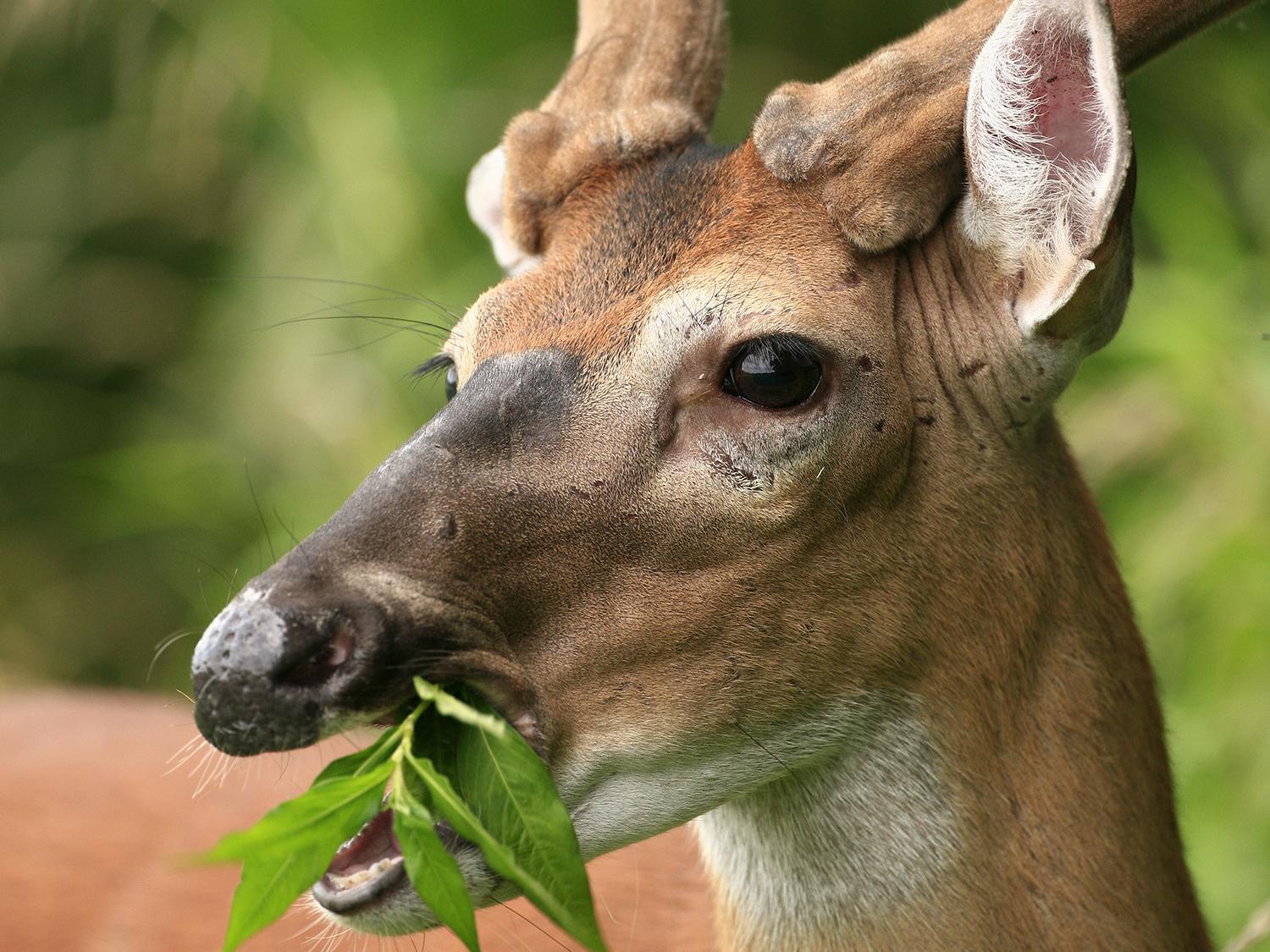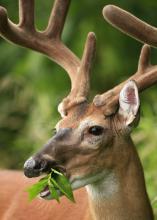Information Possibly Outdated
The information presented on this page was originally released on March 29, 2018. It may not be outdated, but please search our site for more current information. If you plan to quote or reference this information in a publication, please check with the Extension specialist or author before proceeding.
Good nutrition offers keys to best deer herds
STARKVILLE, Miss. -- Researchers at the Mississippi State University Deer Lab have one simple answer to almost every question land managers ask: Nutrition.
How do you improve the health of a deer herd? How do you attract more deer? How do you grow bigger bucks or larger racks? Improve nutrition, and most everything else will take care of itself.
Most hunters want a quick-fix -- like culling -- to improve the deer herd genetics. They think removing these apparently genetically inferior deer will improve the herd, but that’s not how it works. Deer population genetics are very resilient to hunters or predators. In fact, removing large numbers of bucks with a particular antler type will not change the underlying genetics of the population, according to research I’ve witnessed firsthand.
Can hunters use selective harvest to change the frequency of genes that produce larger-than-average antlers? We worked with Texas researchers to answer this question once and for all. We incorporated a very aggressive harvest regime that is near impossible to implement in Mississippi by removing over half of the bucks in each class.
Put another way, all the bucks with below-average antlers were removed, while all the bucks with above-average antlers stayed in the population. Conventional wisdom would tell you that all the big-antlered bucks are breeding the does and, therefore, should produce big-antlered sons, right? But this is not the result we found.
Instead, we had a much smaller buck population because all the below-average antlered bucks were removed. Now keep in mind, the bucks that remained in the population were really big, but, on average, their sons were not.
Keep these two things in mind. First, the mother provides half of the genetics for her son’s antlers, and there is no way to tell if the mother carries genes for large or small antlers. Second, about 70 percent of the yearling bucks will disperse from their birth area. Even if you could use selective harvest to improve genetics, the young bucks you are producing on your property are leaving.
The best way to improve the antler size of bucks on your property is to improve diet quality. Studies that track the response of deer exposed to the best nutrition always produce positive results. Managing forests, timely use of prescribed fire and creating food plots are all tools to improve available nutrients.
Summer -- when bucks are growing antlers and does are producing fawns -- is one of the best times of the year to improve deer nutrition. Habitat management will always pay big dividends for deer and other wildlife on your property.

Editor’s Note: Extension Outdoors is a column authored by several different experts in the Mississippi State University Extension Service.







